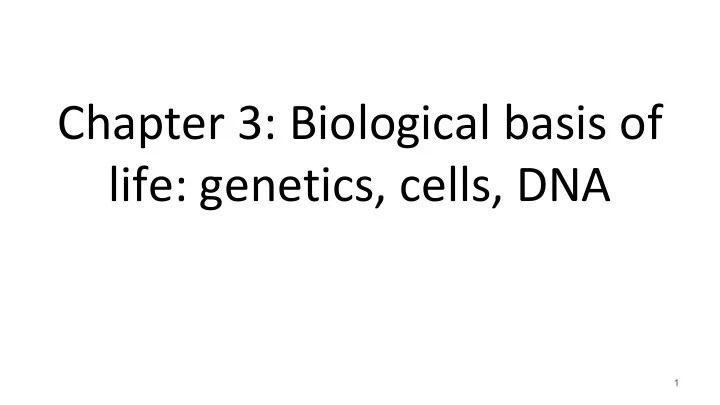

Chapter 3: Biological basis of life: genetics, cells, DNA 1
Types of eukaryotic cells Somatic cells: cells of the body (hair, skin, tissue) Sex cells: (in mammals), ova and sperm (i.e., gametes) 2
Organelles 3
DNA -Directs cell activities -Building blocks of all life-forms Nucleotide structure: Sugar + phosphate + base pairs A denine - T hymine G uanine - C ytosine Bases form complementary bonds 4
DNA replication 1. DNA unzips 2. Exposed bases attract complementary nucleotides 3. Two "parent" strands = templates for new strands 5
DNA replication 1. DNA unzips 2. Exposed bases attract complementary nucleotides 3. Two "parent" strands = templates for new strands 6
Proteins Structural proteins (keratin, collagen) Functional … regulate chemical activities (enzymes, hormones) 7
Proteins -Made of amino acid chains Amino acids -Sequence and number determine protein function Triplets: sequence of 3 DNA bases specifies amino acids 8
9
DNA vs RNA RNA -Single-stranded - Uracil base instead of thymine 10
Protein synthesis Part 1 (transcription) in the nucleus... - mRNA copies DNA bases three at a time ( triplets ) into codons Part 2 (translation) in the cytoplasm with ribosomes... - tRNA binds amino acids with complementary codons 11
Protein examples Hormones -Produced by specialized cells -Influence chemical reactions -Regulates various cell functions Hemoglobin binds oxygen to red blood cells... 12
Recommend
More recommend